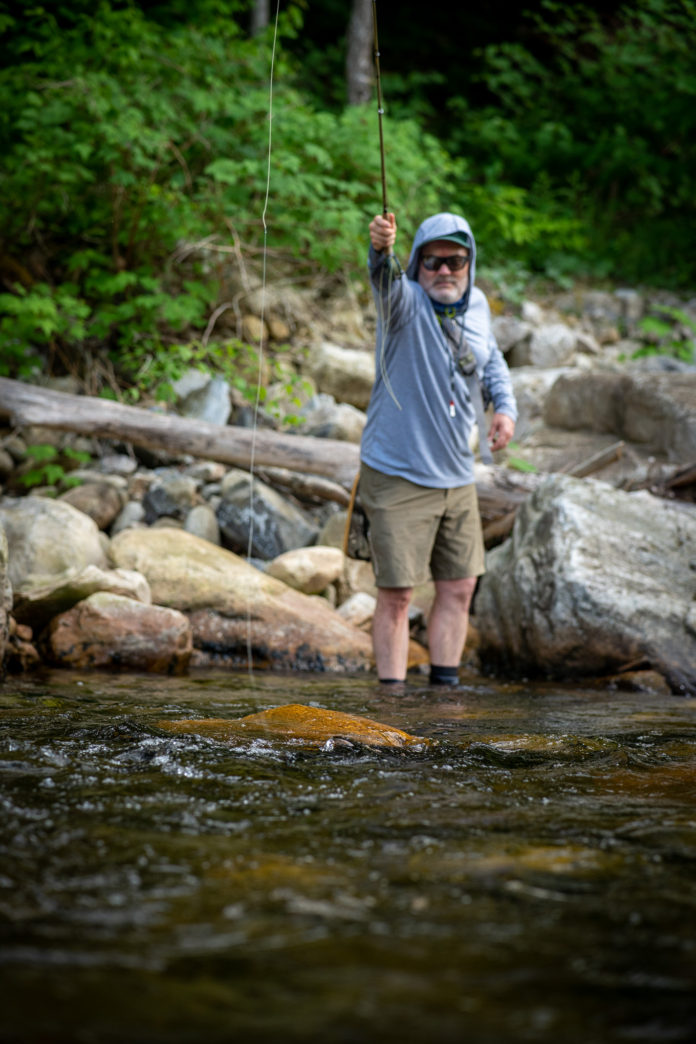Photo by Drew Nisbet
Okay, so you’ve spotted a rising fish. You should probably start casting to it immediately, before it stops rising, right? No. First, you should think about how you should position yourself to get the best presentation. One thing that anglers often wonder about is how close they should get to the fish. The answer, as it often is in this sport, is that it depends–on the kind of water you’re fishing, on the equipment you’re using, on the angle of the light, and so on.
Ideally, you should be just close enough to achieve the required drift. If you’re too close, you risk spooking the fish; if you’re too far away, and you’re not going to catch it anyway because your fly will drag. As simple as this seems, figuring out how close to get to a trout is a very complicated proposition because of the number of factors involved. Here are a few basic principles:
- You can get closer to a fish that’s rising in fast, broken water than you can to a fish rising in a slow, flat pool. In flat water, the waves created by wading will travel upstream and alert the fish.
- The shorter the cast, the more likely it will be accurate, and the less line you have on the water, the more likely you are to achieve a good dead drift. Just because you can cast 40 feet doesn’t mean you have to. You’ll catch more fish if sneak closer.
- If there are several conflicting currents between you and the fish, it pays to try to sneak close enough to use the length of your rod to hold the line out of the conflicting currents. Otherwise, all those currents will drag on your line and ruin your dead drift. A 9-foot rod will allow you to keep more line off the water, which means that you can be a little farther from the fish than you would be with a 7-foot, 6-inch rod.

Oftentimes, you can get closer to a rising fish by staying out of the water.
Photo by Sandy Hays
- If you’re casting downstream to a fish, you have to stay farther away, since any disturbance you make in the stream will be telegraphed downstream to the fish. An upstream approach (from behind the trout) allows you to get closer. This is one reason that most dry-fly anglers prefer to fish upstream.
- Keep a low profile, and dress for stealth. Wear earth tones and don’t hang your silver hemostat high on your vest.
- Once you are close to a fish, don’t start flailing away immediately. Take the time to plan your casts and drifts carefully. The closer you are to a fish, the fewer casts you want to make.
- Watch your shadow. Approach from an angle that keeps your shadow–or that of your rod–from falling over the fish.
There’s an old saying that “You can’t catch fish if your fly isn’t in the water,” but it usually pays to observe and analyze the situation before you start casting. Those extra moments spent determining your best casting position may mean that you’ll get fewer shots at the rising fish, but they are sure to be better shots.
There is a learning curve involved here, and you’re sure to spook or put down a few trout in the process. But what you learn from those spooked trout will pay off many times in the future.
Credit: Source link































